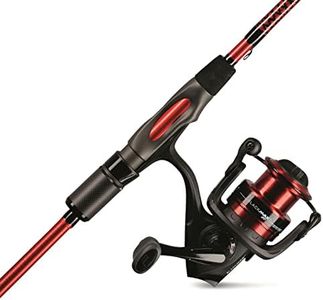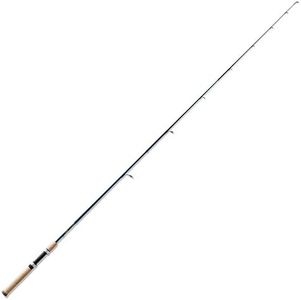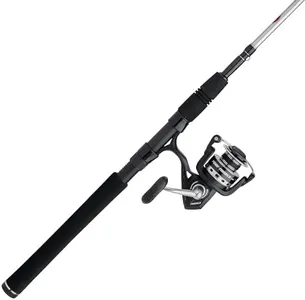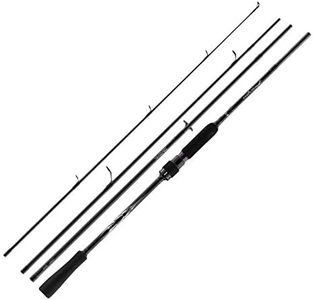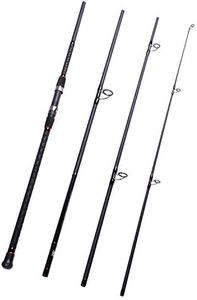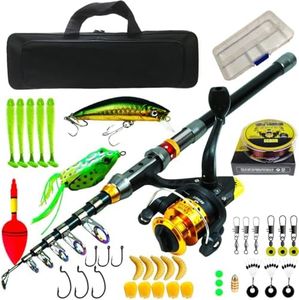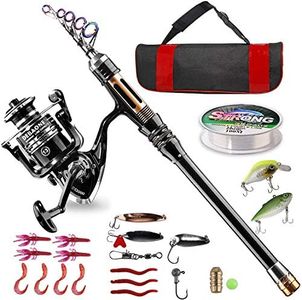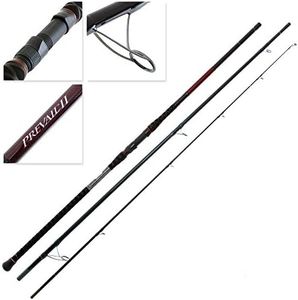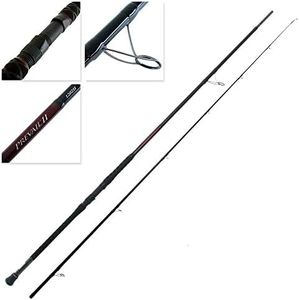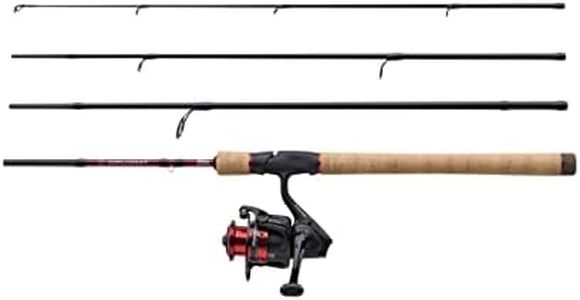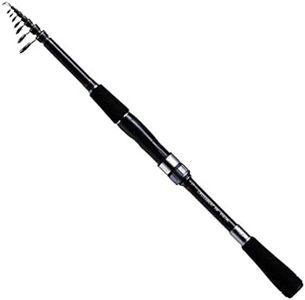We Use CookiesWe use cookies to enhance the security, performance,
functionality and for analytical and promotional activities. By continuing to browse this site you
are agreeing to our privacy policy
10 Best Saltwater Fishing Rods
From leading brands and best sellers available on the web.Buying Guide for the Best Saltwater Fishing Rods
Choosing the right saltwater fishing rod is crucial to having a successful and enjoyable fishing experience. The ocean environment can be tough on gear, so picking a rod that's up to the challenge while matching your fishing style and target species is important. Understanding the main specifications helps you narrow down your choices and get a rod that fits your skills, comfort level, and the type of saltwater fishing you plan to do.Rod LengthRod length refers to the distance from the butt of the handle to the tip of the rod. This is important because it affects casting distance, accuracy, and leverage when fighting a fish. Shorter rods, typically under 7 feet, offer more control and are easier to handle on a boat, making them suitable for trolling or bottom fishing. Medium-length rods around 7 to 9 feet balance casting distance with manageability and work well in many situations. Longer rods, over 9 feet, are best for shore fishing and surf casting since they allow you to cast farther. To pick the right length, think about where you’ll be fishing and if you need more casting distance or handling ease.
Rod PowerRod power describes how much weight the rod can handle, often labeled as light, medium, or heavy. This affects how well you can set the hook and keep control over strong ocean fish. Light power rods are flexible and bend easily, suited for smaller species like snapper. Medium power rods offer a good mix of flexibility and strength for a variety of fish and are a common choice. Heavy power rods are stiffer and designed for big, strong fish such as tuna or sharks. To choose power, consider the size of the fish you want to catch and match the rod power accordingly.
Rod ActionRod action refers to where and how much the rod bends under pressure. Fast action rods bend mostly near the tip, providing quick hook sets and better sensitivity, which is good for feeling bites and reeling in aggressive fish. Moderate action rods bend halfway down, delivering a blend of flexibility and strength, making them suitable for various lures and fishing styles. Slow action rods bend along most of their length, helpful when using live bait and fighting fish gently. Your choice of action should be guided by your fishing technique, target fish behavior, and whether you need more sensitivity or flexibility.
Rod MaterialSaltwater rods are commonly made from graphite, fiberglass, or composite materials. Graphite rods are lightweight and sensitive, making them ideal for detecting light bites but they can be more brittle. Fiberglass rods are heavier but much tougher and more forgiving, which is helpful for fighting larger or hard-charging fish. Composite rods blend aspects of both, aiming for a balance of weight, strength, and sensitivity. To choose, think about whether you prioritize feeling subtle movements (choose graphite) or need durability for bigger fish and rougher conditions (choose fiberglass or composite).
Rod Guides and Reel SeatsThe guides (the loops the line travels through) and reel seat (where the reel attaches) need to withstand corrosion from saltwater. High-quality stainless steel, ceramic, or titanium components resist rust and will last longer. Lower-quality materials may corrode quickly and affect performance. If you fish in saltwater regularly, pay close attention to these details and go for corrosion-resistant components to ensure longevity and smooth operation.
Rod HandleThe handle’s material and length also play a role in comfort and control. Handles are typically made from EVA foam or cork, both of which offer a good grip even when wet. Shorter handles are easier for quick movements on a boat, while longer handles provide greater leverage, especially useful when casting from shore or fighting big fish. Select a handle that feels comfortable in your hand and matches your fishing style: shorter for control and longer for power.
